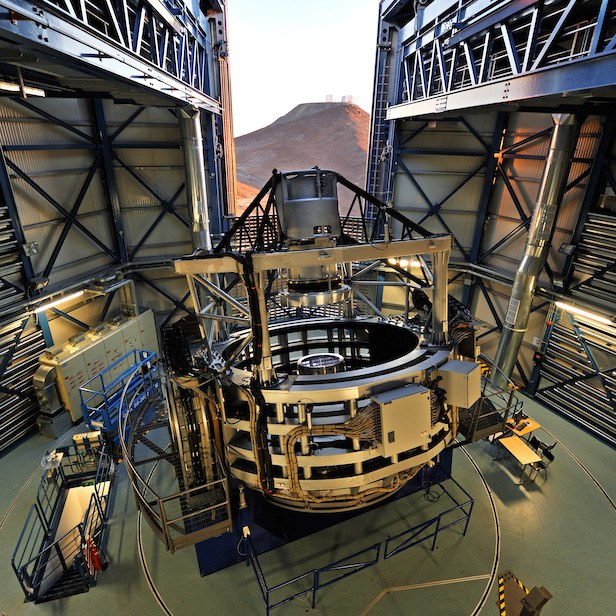Researchers of the Department of Physics will observe 77,000 stars from the 4MOST Telescope in Chile
Jan 28, 2022
Professor Alberto Rebassa of the Department of Physics at the UPC leads, together with Dr. Odette Toloza of the Universidad Técnica Federico Santa María, Chile, a team of 30 researchers from 18 institutions around the world to obtain and analyze the spectra of 77,000 stars. in a telescope of the southern European observatory located in Chile.
The 4MOST (4-meter multi object spectroscopy telescope) consortium of the Southern European Observatory plans to observe more than 20 million celestial objects in the southern hemisphere with the motivation of analyzing a wide variety of scientific problems open to astronomy. modern. 4MOST, located in Cerro Paranal, Chile, will begin operations in early 2024 and the project is expected to last at least 5 years. The telescope will be able to obtain spectra (energy flux per wavelength) that cover virtually the entire visible range of 2400 objects per exposure simultaneously, that is, an average of 18,000 objects overnight.
A total of 10 large-scale projects called Consortium Surveys account for 70% of the time of future 4MOST observations. Millions of stars will be observed to better understand the formation and evolution of our Galaxy. The remaining 30% of time will be spent observing a dozen carefully selected projects called Participant Surveys. Dr. Alberto Rebassa, professor at EETAC and member of the Astronomy and Astrophysics Group (GAA) of the UPC and the Institute of Space Studies of Catalonia (IEEC), is a principal investigator with Dr. Odette Toloza of the Universidad Técnica Federico Santa María, Chile, of one of these projects, which has gained time to observe 77,000 binary stars.
A binary star is made up of two stars. In the case of the observation project of Dr. Beyond that, these binaries are composed of a main sequence-type star like the Sun and a white dwarf. A white dwarf is the most common type of stellar remnant (final phase of star life). A few thousand spectra of this type of binary are currently available. With 4MOST's observations in the near future of 77,000 such stars, Dr. Rebassa and collaborators will analyze a wide variety of scientific issues such as the evolution of compact binary stars, the progenitors of thermonuclear supernovae, the age-metallic relationship of the galaxy, the physical and magnetic properties of solar-type stars, and so on. . The research team has 30 researchers from 18 institutions and universities in the United Kingdom, Germany, Chile, China, Italy and the United States. Dr. Roberto Raddi and Dr. Santiago Torres of the GAA of the UPC are also members of this team.

Share: